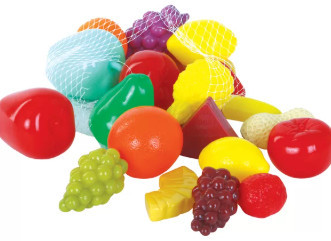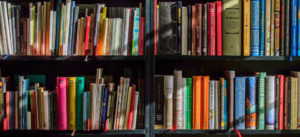Sorting in Preschool
Many people overlook the importance of sorting in preschool. They don’t realize the connection between sorting in preschool and developing long term math skills.
Sorting is one of the first foundational math skills that children start to develop. At a very early age, infants show us that they know the difference between familiar and unfamiliar adults. Sorting is their way of creating a sense of order and understanding of what’s going on in their world.
Sorting comes naturally to young children. Much of their lives and play involve sorting and making sets. How many times have you had a young child fill his pockets up with rocks? How many parents have walked into their child’s room and they have placed all their blocks or toys into different piles?
When children first start to sort and classify objects, they begin to notice how items are alike and different. They will then start to match objects that are similar. From there they move to grouping objects according to their different attributes. At first you will see them sorting by only one attribute. As they have more opportunity to sort, they start to realize that a single item can have many attributes by which it can be sorted.
Why Sorting such an Important Skill
Sorting and classifying are great ways for children to start learning about relationships and attributes as well as teach children how rules apply to sets. Since math is all about rules and systems, lots and lots of practice and exploration in sorting is a really great way for those young learners to start developing these concepts.
A child who has good sorting and patterning skills can:
- Make matches
- Identify sets
- Classify items by single attributes
- Classify items by multiple attributes
- Recognize and create patterns
- Understand patterns, relations, and functions
- Compare sets for differences and similarities
- Recognize relationships between sets
- Understand how rules apply to sets.
Five Popular Books to Teach Sorting
- Five Creatures by Emily Jenkins: This story is about a family with five members. Thee of the members are people and two of the members are cats. Throughout the story these creatures are classified into different groups according to their different characteristics.
- Sort it Out by Barbara Mariconda: Packy the Pack Rat sorts all the random items that he has collected into different groups with similar characteristics such as color, shape where they are found.
- The Button Box
by Margarette S. Reid: In this story, a little kid finds all kinds of buttons in his grandma’s button box. He then sorts the many different buttons according to their non-traditional attributes (design, sparkly, colored with cloth, metal buttons).
- A Pair of Socks by Lois Ehlert: Children will learn all about matching patterns as a lone red-and blue striped sock searches for its match.
- Goldilocks and the Three Bears: This book helps students classify objects into 3 groups (big, medium, and small). This is a good example of a story that helps teach children to look for sorting in everyday life.
Do’s for Teaching Sorting
Do provide hands-on concrete materials for the children to manipulate and explore.
Do Provide authentic and real-life experiences whenever possible
Do promote discovery through explorations with open-ended materials
Do allow children time to work and talk with others
Do encourage students to talk about math and explain their thinking, even if their answer is wrong.
Do allow children opportunities to set their own categories rather than always giving them set categories to work with
Do provide prompting and open-ended questions to extend and challenge thinking
Do allow for practice and more practice
Activities for Sorting
Sorting Tube: You will need colored pompoms and sorting tubes. Sorting tubes are just paper towel tubes colored in different colors or wrapped with paper to make different colored tubes that match the colors of your pom poms. Tape the tubes to a wall or back of a shelf so they cannot move. Place a bowl underneath each tube to collect the pompoms as they fall through the tubes. The students will take one pompom and put it in the tube that matches in color and watch it fall into the bowl. After they have put all the pompoms down the tubes, they will take in the bowl and see if all the colors are the same. If they have a pompoms that is different in color, they need to take the pompom and put it down the correct tube.
Plastic food Sort: Collect the play food from your kitchen area. Discuss what they notice about the food. Guide the children to seeing the different colors of the food. Have the children sort the food by color. If some food has two or colors (watermelon could be green, red, with black seeds) how are we going to sort it? After they are done sorting the food by color, pick up the orange and notice aloud that that looks like a circle. Guide the students into noticing the different shapes of the food. Sort the food by shape. Ask them what else do they notice about the food. Let the students discover the different attributes that they can sort the food. Notice aloud: “I like apples, but I don’t like corn.” Could we sort the food by what we like and don’t like?
People Sort: This activity works best when you split the class into two. One group will be the sorters and the other group will be the ones being sorted. Have the students talk about what they notice about their shirts. Let the students decide on how we could group the students based on their shirts. Continue sorting with difference in clothing (Shoes/pants/ sweaters). If students come up with a different way to sort other than clothes, let them sort that way too (long hair or short hair, bows in their hair, no bows, glasses).
Sorting Stones: Using stones to sort provides students an opportunity to sort real world objects. Let the students collect and bring in rocks. (What kid doesn’t like collecting rocks). By having the students collecting the rocks for the activity, you are giving them a purpose for the activity. Place all the rocks together and let the children practice sorting (Color, size, shape, texture)
Leaves Sort: Leaves sort is another way to bring real world objects into the lesson. When the leaves start to fall off the trees, have the students bring in some leaves to sort. Let the students sort the leaves using the different attributes (Color, size, shape, points).

Plastic food Sort: Collect the play food from your kitchen area. Discuss what they notice about the food. Guide the children to seeing the different colors of the food. Guide the children through sorting the food by color. After they are done sorting the food by color, pick up the orange and notice aloud that that looks like a circle. Guide the students into noticing the different shapes of the food. Sort the food by shape. Ask them what else do they notice about the food. Let the students discover the different attributes that they can sort the food. Notice aloud: “I like apples, but I don’t like corn.” Could we sort the food by what we like and don’t like? If some food has two or colors (watermelon could be green, red, with black seeds) how are we going to sort it?
